Steel Products
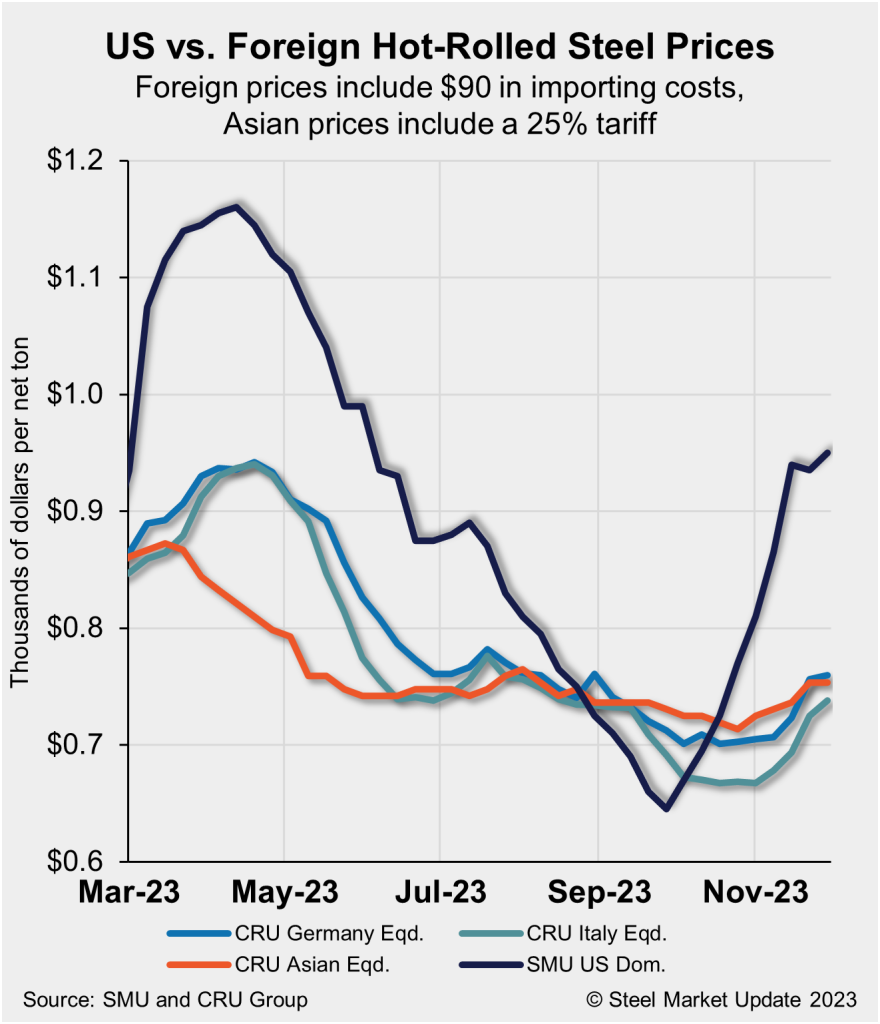
US HRC remains $200/ton more expensive than offshore product
Written by David Schollaert
November 30, 2023
US Hot-rolled coil (HRC) prices continue to move higher following repeated mill increases. The trend has caused domestic tags to become far more expensive than imported offshore hot band.
Domestic HRC tags have increased for the ninth consecutive week. While imports have been on a four-week rally, the gains have been only marginal over the same period when compared to US prices, according to SMU’s latest foreign vs. domestic price analysis.
Nucor’s now targeting $1,100 per ton ($55 per cwt) base prices for HRC, according to a letter to customers on Nov. 27. And while US HRC tags increased to $950 per ton, up $15 per ton from the week before, they’re still trailing current mill target base prices, according to our interactive pricing tool. Tags have, nonetheless, soared by more $300 per ton from their lowest point of the year, $645 per ton in late September.
Import prices, in contrast, had been largely trending downward since late April but have been on a steady rise over the past month. The result: Imported product is still 21% cheaper than domestic material once freight and other costs are accounted for. That’s down slightly from 23.7% two weeks ago but still a shift from late September, when imports were nearly 11% more expensive than US product.
Methodology
This is how SMU calculates the theoretical spread between domestic HRC prices (FOB domestic mills) and foreign HRC prices (delivered to US ports): We compare SMU’s US HRC weekly index to the CRU HRC weekly indices for Germany, Italy, and East and Southeast Asian ports. This is only a theoretical calculation. Import costs can vary greatly, influencing the true market spread.
We add $90 per ton to all foreign prices as a rough means of accounting for freight costs, handling, and trader margin. This gives us an approximate CIF US ports price to compare to the SMU domestic HRC price. Buyers should use our $90-per-ton figure as a benchmark and adjust up or down based on their own shipping and handling costs. If you import steel and want to share your thoughts on these costs, please don’t hesitate to get in touch with david@steelmarketupdate.com.
Asian hot-rolled coil (East and Southeast Asian ports)
As of Thursday, Nov. 30, the CRU Asian HRC price was $531 per ton, unchanged from the previous week. Adding a 25% tariff and $90 per ton in estimated import costs, the delivered price of Asian HRC to the US is approximately $753 per ton. The latest SMU hot rolled average for domestic material is $950 per ton.
The result: US-produced HRC is theoretically $197 per ton more expensive than steel imported from Asia.
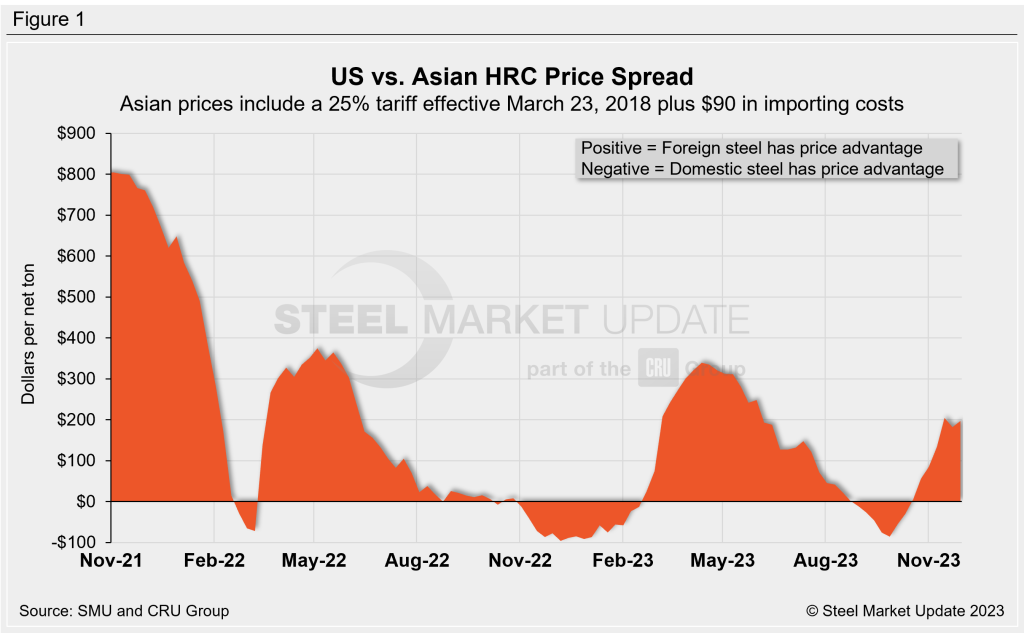
Italian hot-rolled coil
Italian HRC prices increased by $13 this week to roughly $648 per ton, and are now up $70 per ton over the past month. After adding import costs, the delivered price of Italian HRC is in theory $738 per ton.
That means domestic HRC is theoretically $212 per ton more expensive than HRC imported from Italy. That’s down from $246 per ton just two weeks ago but still a $261-per-ton swing from late September when US prices were $49 per ton cheaper than prices for Italian hot band.
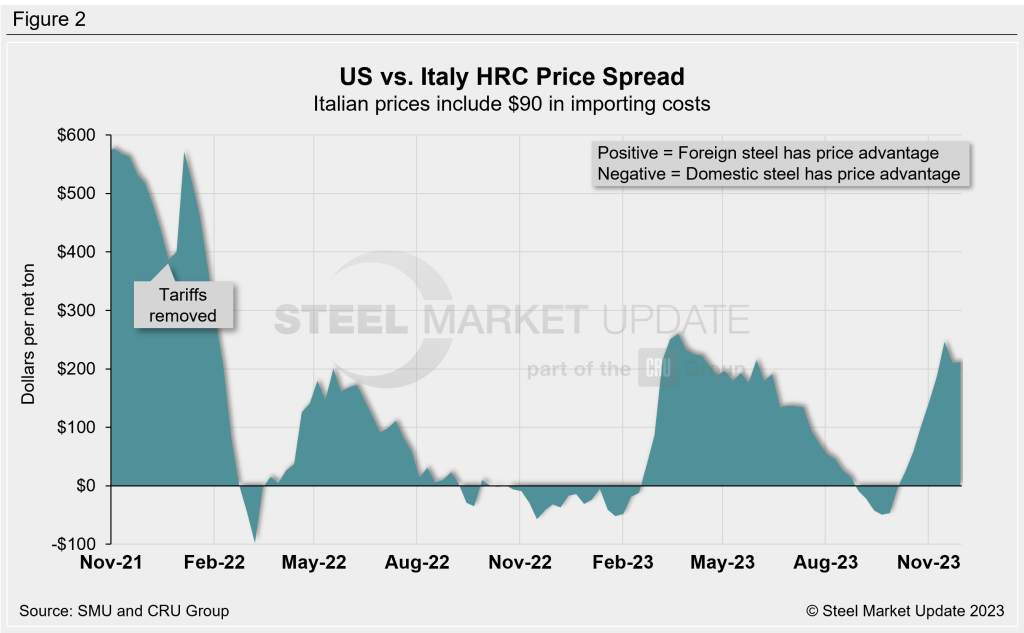
German hot-rolled coil
CRU’s German HRC prices increased by just $4 per ton week over week (WoW) to $670 per ton. After adding import costs, the delivered price of German HRC is in theory $760 per ton. The result: Domestic HRC is theoretically $190 per ton more expensive than HRC imported from Germany.
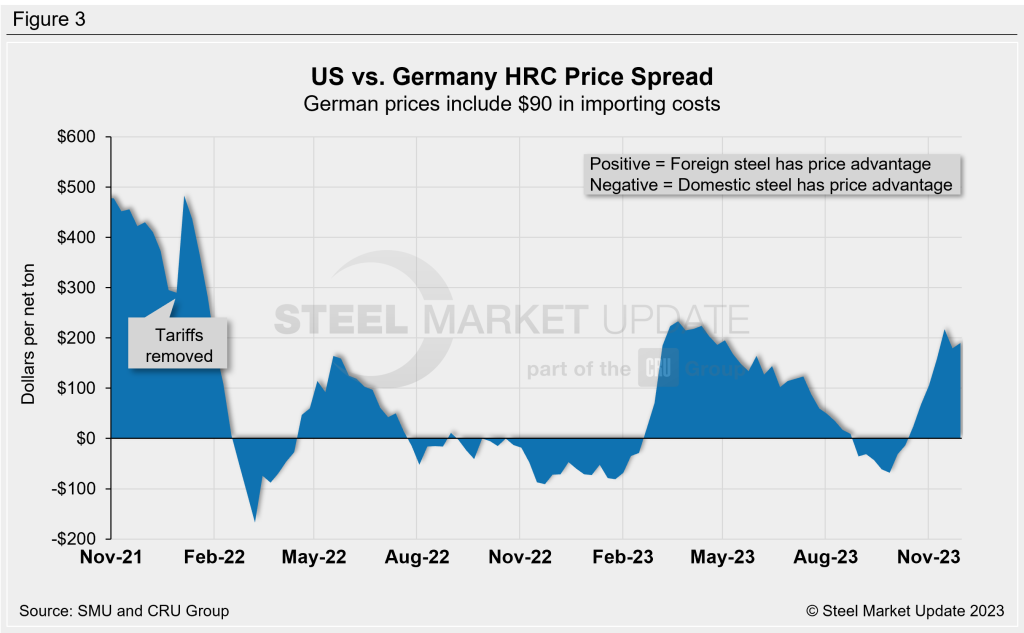
Figure 4 compares all four price indices. The chart on the right zooms in to highlight the difference in pricing from the second quarter of this year to the present.
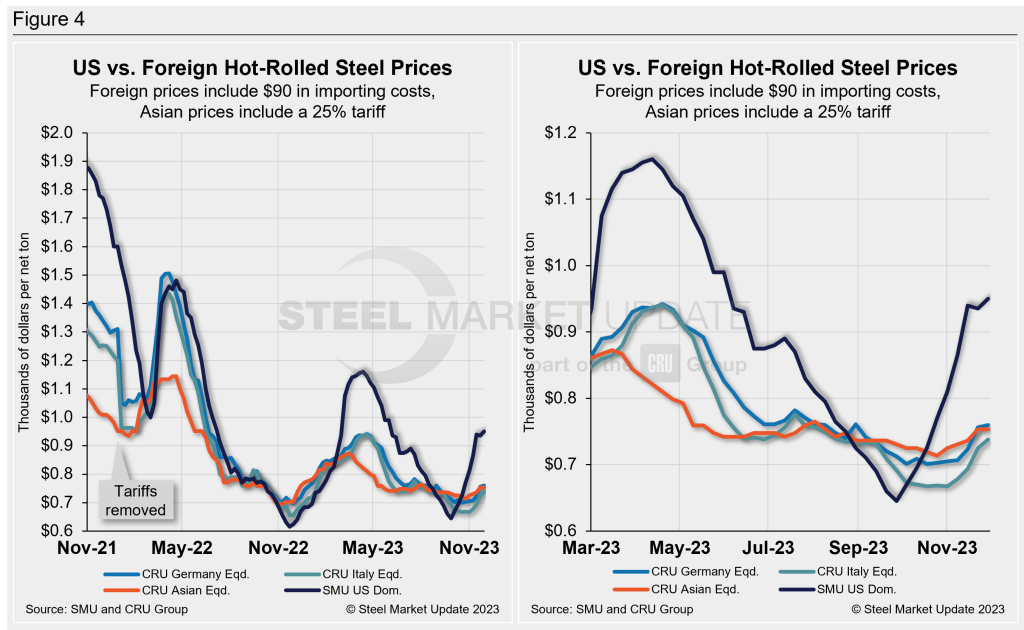
Notes: Freight is important in deciding whether to import foreign steel or buy from a domestic mill. Domestic prices are referenced as FOB the producing mill, while foreign prices are CIF the port (Houston, NOLA, Savannah, Los Angeles, Camden, etc.). Inland freight, from either a domestic mill or from the port, can dramatically impact the competitiveness of both domestic and foreign steel. It’s also important to factor in lead times. In most markets, domestic steel will deliver more quickly than foreign steel.
Effective Jan. 1, 2022, the traditional Section 232 tariff no longer applies to most imports from the European Union. It has been replaced by a tariff rate quota (TRQ). Therefore, the German and Italian price comparisons in this analysis no longer include a 25% tariff. SMU still includes the 25% Section 232 tariff on foreign prices from other countries. We do not include any antidumping (AD) or countervailing duties (CVD) in this analysis.

David Schollaert
Read more from David SchollaertLatest in Steel Products

US rig count up, Canada declines
Oil and gas drilling activity was mixed this week, according to Baker Hughes. US rig counts expanded for a second straight week, while Canadian activity continued its seasonal slowdown of eight consecutive weeks.

US, offshore CRC prices continue to diverge
US cold-rolled (CR) coil prices declined again this week, slipping for a third straight week. Most offshore markets did the opposite, moving higher this week.
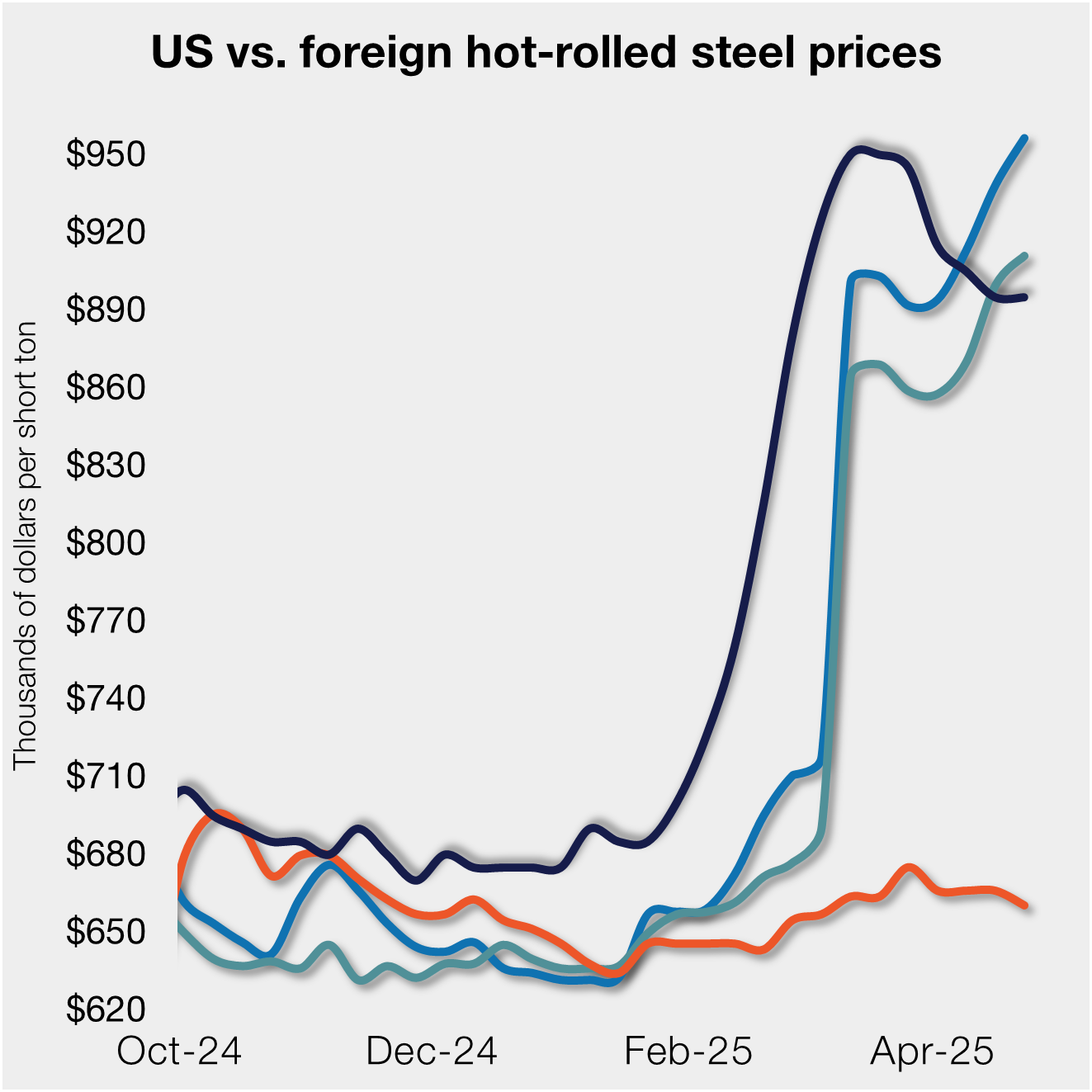
S232 lifts EU HR price over US, Asian HR still well behind
Domestic hot-rolled coil prices were flat this week after dropping for four straight weeks. Most offshore markets bucked the trend and gained ground.

SMU Steel Demand Index dips into contraction
SMU’s Steel Demand Index has moved into contraction, according to late April indicators. The slowdown comes in response to growing tariff uncertainty after the index reached a four-year high in late February.

Nucor selects Fives Group for new galv line at CSI
Nucor Corp. has tapped Fives Group as its partner in designing and manufacturing the new continuous galvanizing line being added at its California Steel Industries (CSI) joint venture in Fontana, Calif.
